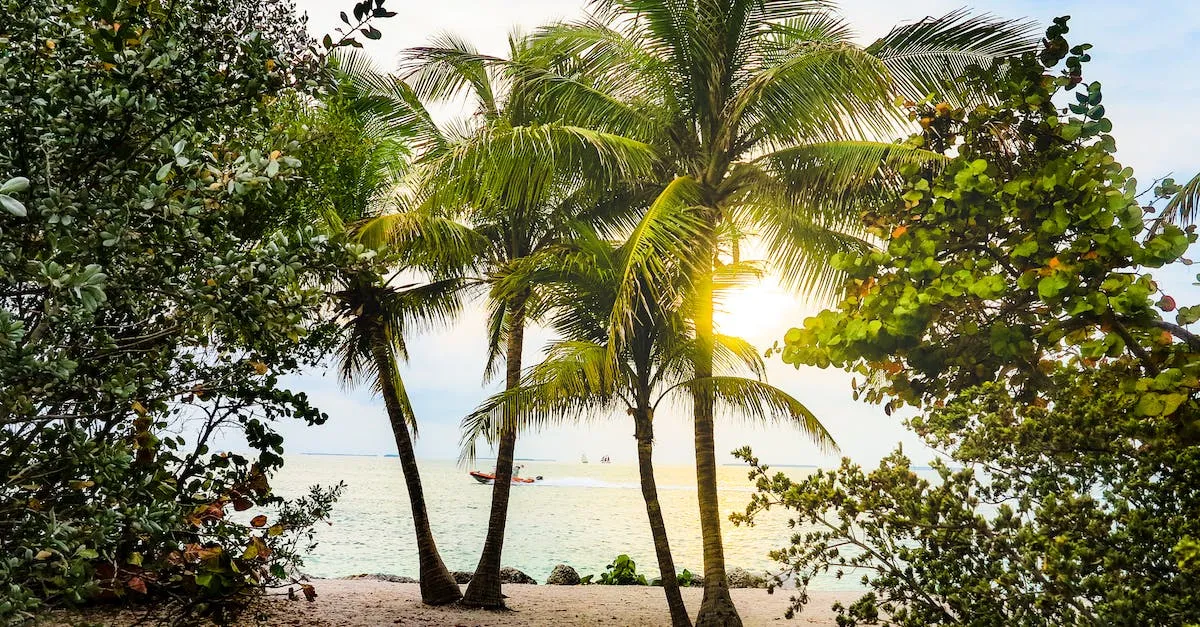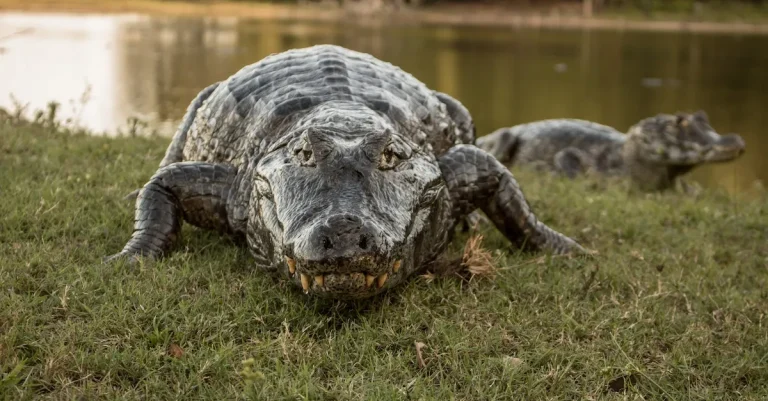What Biome Is Florida?
Florida is known for its sunny beaches, swampy wetlands, and humid climate. But what exactly is the biome of this unique state? If you’re short on time, here’s a quick answer: Florida is considered a humid subtropical climate. In this comprehensive article, we’ll take an in-depth look at Florida’s biome characteristics including temperature, precipitation, plants, animals, and geographic location.
We’ll examine what factors contribute to Florida’s humid subtropical biome and how it differs across regions of the state. Whether you’re a Florida resident looking to learn more about your surroundings or simply interested in biomes, read on to uncover the characteristics that define Florida’s climate.
Defining the Humid Subtropical Climate Biome
Florida is classified as part of the humid subtropical climate biome. This biome is characterized by hot, humid summers and mild winters. It is found in areas that are located between the tropics and the mid-latitudes. Let’s take a closer look at the key factors that define this biome in Florida.
Temperature
The humid subtropical climate biome in Florida experiences high temperatures throughout the year. Summers are hot and humid, with temperatures often reaching above 90°F (32°C). Winters are mild, with average temperatures ranging from 50°F (10°C) to 70°F (21°C).
These temperature ranges provide a favorable environment for a diverse range of plant and animal species to thrive.
Precipitation
Florida’s humid subtropical climate biome is also characterized by abundant precipitation throughout the year. Rainfall is evenly distributed, with no distinct dry season. The annual precipitation in Florida ranges from 50 to 65 inches (127 to 165 cm), with some areas receiving even higher amounts.
This consistent rainfall supports the lush vegetation and diverse ecosystems found in the state.
Geographic Location
Florida’s geographic location plays a significant role in its classification as a humid subtropical climate biome. It is situated in the southeastern part of the United States, bordered by the Atlantic Ocean on the east and the Gulf of Mexico on the west.
This proximity to large bodies of water influences the climate, with the ocean currents moderating temperatures and providing moisture. The combination of warm waters and prevailing winds contributes to the high humidity levels in the state.
For more information on the humid subtropical climate biome and its characteristics, you can visit websites such as www.worldatlas.com or www.nationalgeographic.org.
Regional Variation Across Florida
Florida, also known as the Sunshine State, is a diverse and unique state in terms of its geography, climate, and ecosystems. The state is located in the southeastern part of the United States and is bordered by the Gulf of Mexico to the west and the Atlantic Ocean to the east.
Due to its large size and diverse landscapes, Florida can be divided into different regions, each with its own distinct characteristics.
North Florida
In North Florida, you’ll find a mix of forests, rivers, and rolling hills. This region is known for its temperate climate, with mild winters and hot, humid summers. The Apalachicola National Forest, one of the largest national forests in the state, is located here and is home to a wide range of plant and animal species.
North Florida is also known for its numerous freshwater springs, which provide opportunities for swimming, diving, and other recreational activities.
Central Florida
Central Florida is perhaps best known for its theme parks and tourist attractions, including Walt Disney World Resort, Universal Orlando Resort, and SeaWorld Orlando. However, beyond the bustling theme parks, this region also offers a diverse range of ecosystems and natural beauty.
The Ocala National Forest, located in Central Florida, is a popular destination for hiking, camping, and birdwatching. Additionally, the region is dotted with lakes and rivers, providing ample opportunities for boating, fishing, and other water-based activities.
South Florida
South Florida is characterized by its tropical climate, stunning beaches, and unique ecosystems. The Florida Everglades, a vast wetland known as the “River of Grass,” is a UNESCO World Heritage Site and a must-visit destination in the region.
South Florida is also home to the Florida Keys, a string of islands known for their crystal-clear waters and vibrant coral reefs. The region is teeming with wildlife, including alligators, manatees, and a diverse array of bird species.
Plants and Animals of Florida’s Biome
Florida is known for its diverse and unique biome, which is a distinct ecological community characterized by specific plants, animals, and climate patterns. The state’s location and climate make it home to a wide variety of species that thrive in its unique environment.
Let’s explore some of the plants and animals that call Florida’s biome their home.
Common Plants
Florida’s biome is rich in plant life, with a variety of species adapted to its warm and humid climate. Some common plants found in Florida include:
- Palm trees: Florida is famous for its iconic palm trees, such as the coconut palm and the royal palm. These trees add a tropical touch to the state’s landscapes.
- Cypress trees: The bald cypress is a common sight in Florida’s wetlands, with its unique knobby “knees” protruding from the water.
- Spanish moss: This epiphytic plant hangs from trees, giving them a mystical and ethereal appearance. It is often seen draping from oak trees in Florida.
- Saw palmetto: This small palm species is native to Florida and is known for its fan-like leaves and medicinal properties.
These are just a few examples of the many plant species that thrive in Florida’s diverse biome.
Common Animals
Florida’s biome is also home to a wide array of animal species, both on land and in the water. Some common animals found in Florida include:
- Alligators: These formidable reptiles are an iconic symbol of Florida. They can be found in various water bodies, such as swamps and lakes.
- Manatees: Also known as sea cows, manatees are gentle marine mammals that graze on seagrass in Florida’s coastal waters and freshwater springs.
- Florida panthers: These endangered big cats are native to Florida and are known for their striking appearance and elusive nature.
- Florida scrub jays: These vibrant blue birds are endemic to Florida and can be found in the scrub habitats of the state.
These are just a few examples of the diverse animal life found in Florida’s biome.
Marine Life
Florida’s location along the Gulf of Mexico and the Atlantic Ocean makes it a haven for marine life. The state’s warm waters are home to a wide variety of fish, turtles, dolphins, and other marine species. Some notable marine life found in Florida includes:
- Sea turtles: Several species of sea turtles, such as the loggerhead and green turtles, nest on Florida’s beaches and swim in its coastal waters.
- Dolphins: Bottlenose dolphins are commonly spotted in Florida’s waters, often seen playfully swimming alongside boats or in pods.
- Snook: This popular game fish is found in Florida’s coastal waters and is sought after by anglers for its fighting spirit.
- Coral reefs: Florida is home to the only living coral reef system in the continental United States, known as the Florida Reef Tract. It supports a diverse range of marine species.
Florida’s marine life is a vital part of its ecosystem and contributes to the state’s natural beauty and recreational opportunities.
For more information about Florida’s plants and animals, you can visit Florida Museum and Florida Fish and Wildlife Conservation Commission.
Factors Contributing to Florida’s Climate
Florida’s unique climate is influenced by several factors, including its proximity to water, latitude and sun exposure, and the prevailing westerlies.
Proximity to Water
One of the key factors shaping Florida’s climate is its proximity to water. With the Atlantic Ocean to the east and the Gulf of Mexico to the west, Florida experiences the moderating effects of these large bodies of water.
The ocean currents and sea breezes help regulate temperature, keeping it relatively mild throughout the year. The presence of water also contributes to the high humidity levels that Florida is known for.
Latitude and Sun Exposure
Florida’s location near the equator makes it subject to ample sunlight year-round. The state’s southernmost point, Key West, is just 90 miles from Cuba and lies at approximately 24 degrees latitude. This means that Florida receives a significant amount of direct sunlight, resulting in warm temperatures.
The long summers and mild winters are a result of the state’s proximity to the Tropic of Cancer.
Prevailing Westerlies
The prevailing westerlies, also known as the trade winds, are another factor influencing Florida’s climate. These winds blow from west to east and are responsible for the movement of weather systems across the state.
They help bring in moisture from the Gulf of Mexico and can also bring tropical storms and hurricanes during the Atlantic hurricane season, which runs from June to November.
Florida’s climate is a unique combination of factors that contribute to its warm temperatures, high humidity, and occasional extreme weather events. Understanding these factors can help residents and visitors better prepare for the state’s climate and enjoy all that Florida has to offer.
Conclusion
In summary, Florida’s humid subtropical climate consists of hot, humid summers and mild, drier winters. While the state shares some overarching climate characteristics, factors like latitude and proximity to water sources lead to regional variation in temperature, precipitation, plant and animal life across North, Central, and South Florida. Understanding Florida’s biome provides deeper insight into the natural forces that shape this unique state.








